Beer Serving Basics
The most important thing to remember about serving beer is that it should be the freshest beer you can get. This is important whether you enjoy that beer in your home or purchase it in a bar, tavern, or restaurant.
It is up to you to present that beer, at your table, to your friends, in the most appropriate way.
Drinking beer straight from the bottle is fine for camping trips, softball games, or other instances where the refreshment of a cold, wet beverage is the reason for drinking beer. Properly serving a beer will bring out all the nuances of a good beer.
There are three critical aspects to serving beer properly: temperature, “Beer Clean” glassware, and how the beer is poured.
The Proper Temperature to Serve Beer
Lagers, Ales, and specialty beers such as Lambic or Rauch beer should be poured at a temperature that brings out the flavors of the yeast’s malt, hops, and essential esters. As a general rule, darker beers (and beers fermented at warmer temperatures) should be served as close to cellar temperature (50F) as possible. Lighter-colored beers, especially lager beers (fermented at cold temperatures), can be served between 40-50F. The reason is that the fermentation process creates unique flavors that can only be appreciated at temperatures close to fermentation temperatures. You should NEVER serve a beer colder than 40F. Temperatures this cold will mask all the flavor. The only sensation you will experience is the refreshing sparkle of a carbonated beverage.
What are “Beer Clean” Glasses?
Beer should be a joy for the eye as well as the palate. It should be served in a “beer clean” glass, appropriate for the style of beer that it is.
A “waiters trick” I’ve learned is employed to solve the problem of spill-over when pouring a trey of Champagne flutes. You simply rub the side of your nose and then run that finger lightly around the lip of each flute. There would be enough natural oil left on the glass to keep the wine from bubbling over the edge of the glass. The same trick is true for pouring beer.
There is nothing like a spot of oil, grease, or lipstick to knock the head of a beer flat. That is why good bars, taverns, pubs, and restaurants never wash their beer glasses in the same dishwasher as the rest of the dishes, glassware, or cutlery. Beer glasses should only be washed in a separate sink, first in hot water with detergent, then rinsed well in cool water and left to air dry. Only then should they be polished with a clean, lint-free dishtowel. This process assures no oils or particles of dust on the glasses to cause heads to fall or bubbles to coat the sides of the glass. Dust on the glass side will create a sheet of bubbles inside the glass when the beer is poured.
How Many Types of Beer Glasses are there?
The shape of the glass should enhance the style of beer that has been poured. Pilsner needs a tall pilsner glass so that the carbonation can dance from the bottom of the glass all the way up to the creamy white head that graces the top of the beer. Porters, stouts, and ales can be served in either straight-sided pint glasses or dimpled pub mugs. Each and every Belgian beer has a specific glass just for it.
I was not surprised to find out that each Belgian beer has a glass designed specifically for that beer. It was also not a surprise to find out that every Belgian beer can be matched to a specific cheese that should be served with it. (But that’s another story.)
FIVE BASIC BEER GLASSES
1) TEKU GLASS
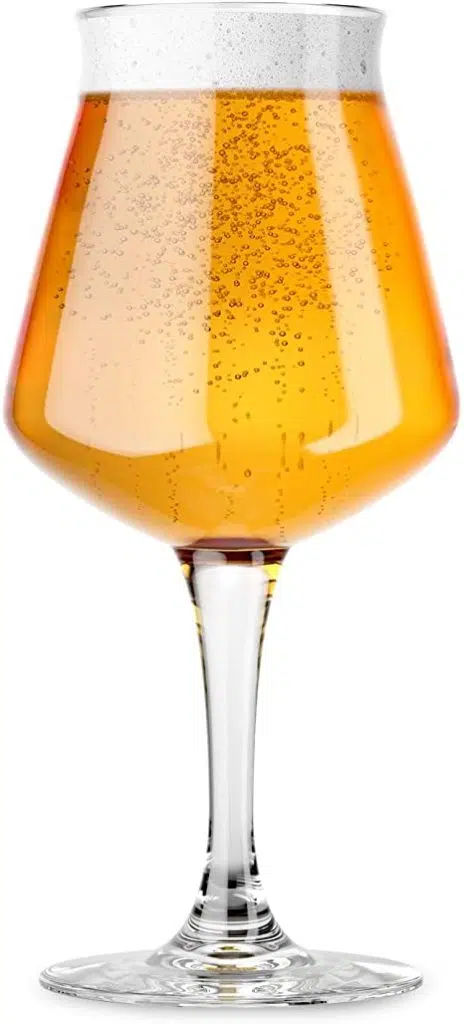
My favorite. This German-made stemmed beer glass, looks like a wine glass, but the angular body this glass is made to capture the aromas of your beer while showing off the carbonation and a wide enough head to make it a glass for all styles of beer and my “Go-To” glass.
2)PILSNER GLASS
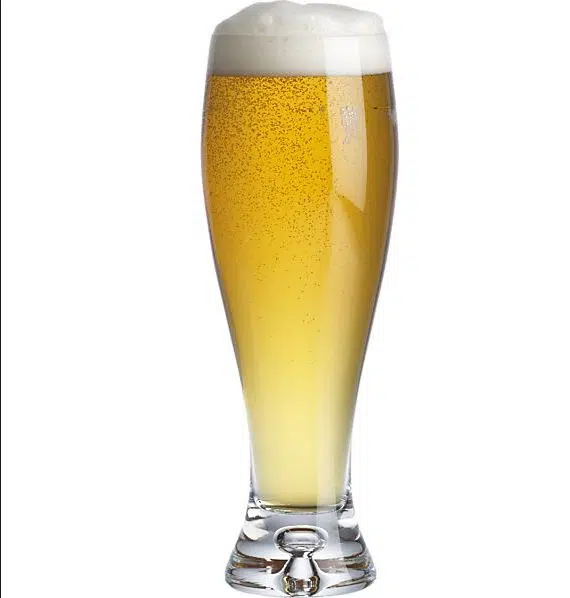
The Pilsner glass is designed to retain the head and let drinkers appreciate the color, clarity, and carbonation.
3) NONIC PINT GLASS
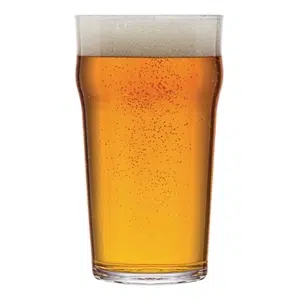
The notched walls and wide mouth make the Nonic pint easy to hold and perfect for showing off the aromas of ales of all sorts. Developed in the UK in the ’60s, one of the five absolute essential five.
4) SNIFTER GLASS
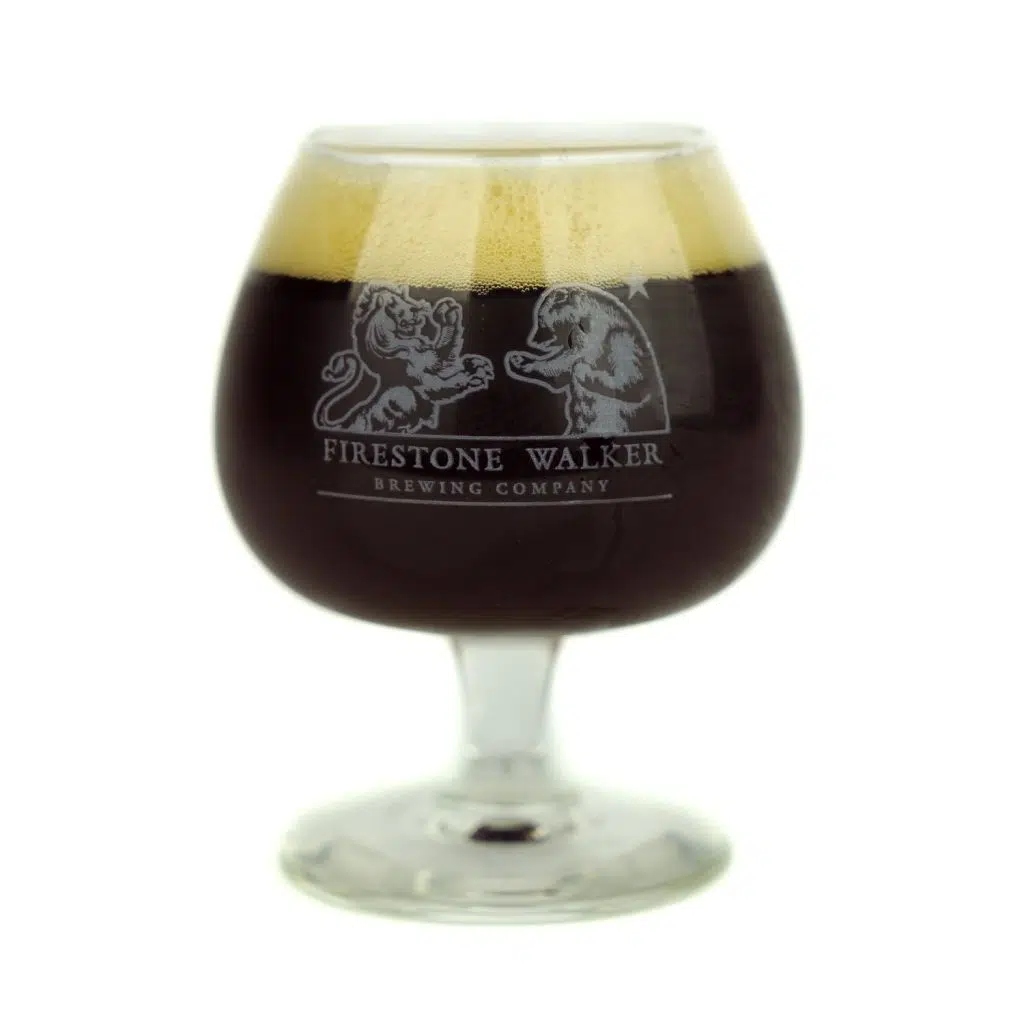
This stemmed beer glass captures the complex flavors and aromas of high ABV beers.
5) STEIN
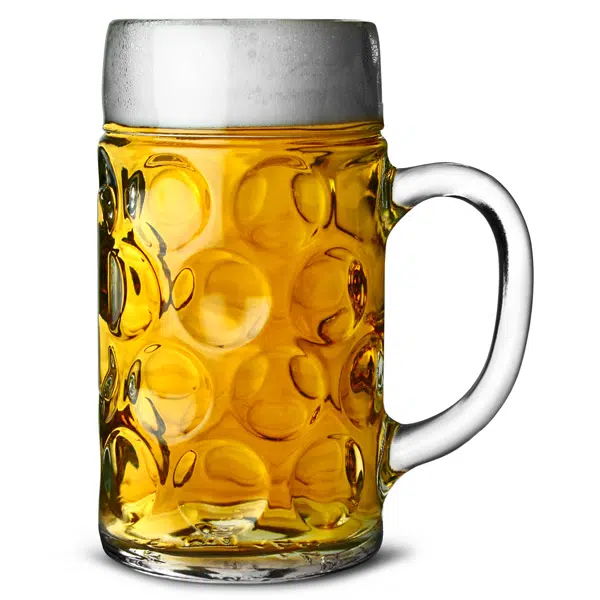
Similar to a beer mug, this is a heavyweight. Traditionally it contains a “Mass” of beer, or one liter.
How to Pour a Glass of Beer
If the beer is being poured from a can or bottle, the first few ounces should be poured directly down into the bottom of the glass and allowed to create a thick, rich head. Then the glass should be tipped slightly, and the beer should be allowed to flow down the inside of the glass rapidly, but not so fast that you end up with half a glass of beer and half a glass of foam.
A properly poured lager beer should have about an inch or so of head, and the carbonation should rise directly from the bottom of the glass. Ales often have less head because they are less carbonated. Stouts should be poured so that they have just a quarter of an inch of head. (This is a legal requirement when serving Guinness in the Republic of Ireland. It has been determined that the head on Guinness is essential to the full enjoyment of the product.
I
How to Pour a Beer on Draft Video
IN CONCLUSION :
To enjoy any beer to its fullest, it must be served in the best way possible.
The following three steps will ensure that you are able to appreciate all aspects of your favorite beer.


